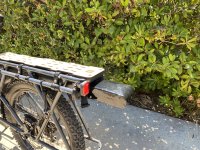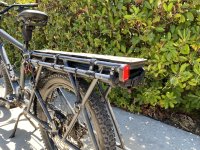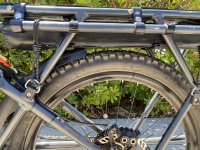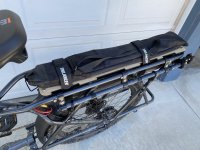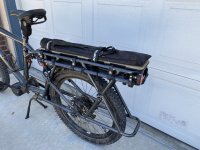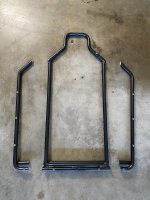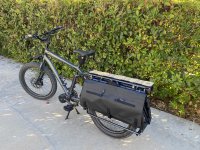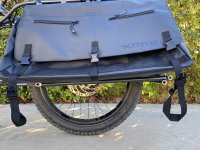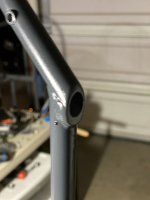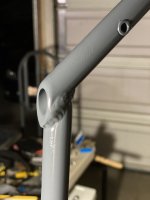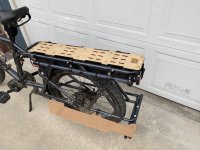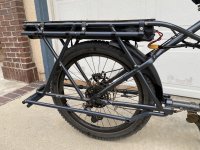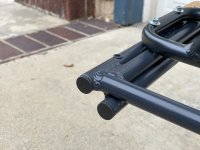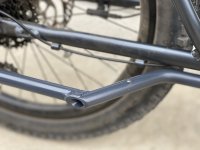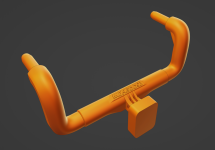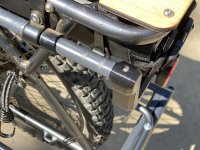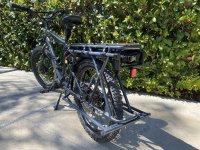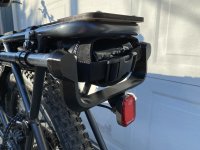nervagon
1 kW
- Joined
- Nov 18, 2020
- Messages
- 357
I decided to update my under-the-cargo-deck battery setup on my Mongoose Envoy. I really wanted to easlily remove the custom battery when needed.

The first order of business was grinding off the bracket for the rear tail light/reflector. And then a quick paint over the scene of the crime.
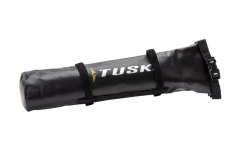
This TUSK bikepacking tent bag is exactly the size I need. It is attached to the Envoy frame with 3 ultra heavy duty zip ties through the original attach points for the OEM panniers (which I don't use). 2 of the zip ties slot perfectly through the webbing on the 2 sides of bag preventing any forward/backward slippage.
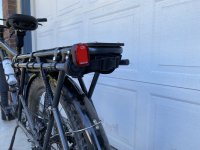
The top buckle on the bag perfectly secures the battery pack in place.
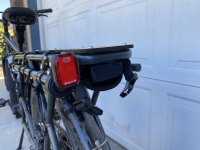
Unbuckling the top buckle reveals the battery pack.
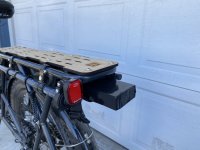
Now the battery pack can be slid out from the back. I'm super happy with how this turned out! The pack is a 52V 14s 2P built with Samsung 50S cells. 10Ah, and capable of powering a BBSHD in 2P.

The first order of business was grinding off the bracket for the rear tail light/reflector. And then a quick paint over the scene of the crime.

This TUSK bikepacking tent bag is exactly the size I need. It is attached to the Envoy frame with 3 ultra heavy duty zip ties through the original attach points for the OEM panniers (which I don't use). 2 of the zip ties slot perfectly through the webbing on the 2 sides of bag preventing any forward/backward slippage.

The top buckle on the bag perfectly secures the battery pack in place.

Unbuckling the top buckle reveals the battery pack.

Now the battery pack can be slid out from the back. I'm super happy with how this turned out! The pack is a 52V 14s 2P built with Samsung 50S cells. 10Ah, and capable of powering a BBSHD in 2P.


